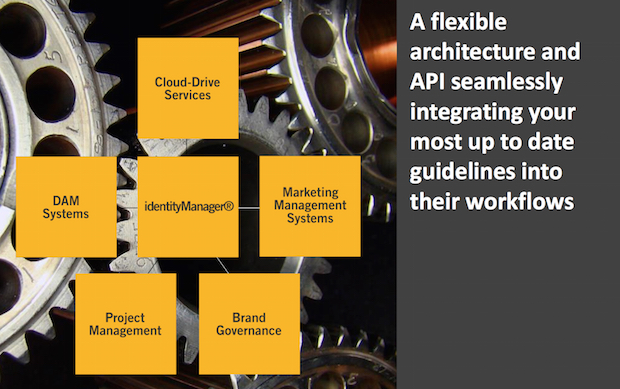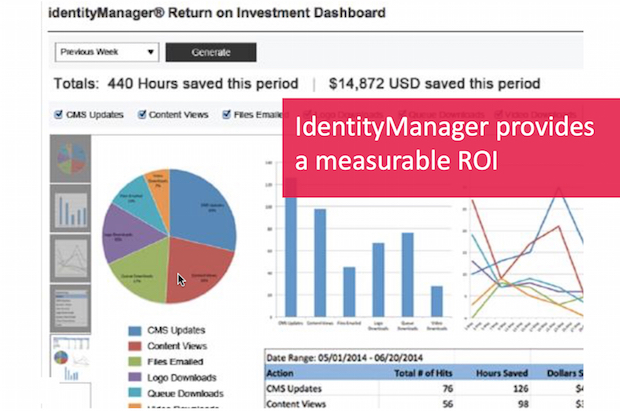Editor’s Note: Want to learn more about adding brand identity services? Check out this webinar archive that features branding expert Mike Reinhardt of Monigle.
Fifteen years ago, I was responsible for reimagining the brand for a large reseller of office equipment and related services. The company had been formed by rolling up a large number of smaller resellers, IT companies and more, and had a fragmented brand with no clear branding guidelines. I turned to Monigle, a branding agency specializing in identity, design, digital and environmental branding, to help with this important task.
It was a pleasure to recently reconnect with Mie Reinhardt, Senior Director of Brand Sustainability at Monigle, and see how far the discipline had come. When we were working together in 2000, one of the key selling points for Monigle’s services was the brand portal. We had 40,000 employees located around North America, and it was important to be able to make all of our marketing materials available to authorized users but at the same time, ensure that brand guidelines (which Monigle also developed for us) were followed.
Those were early days in what would eventually come to be called web-to-print, and which now has become a mature service offering with much more capability than in the old days.
If you are not yet offering web-to-print services, it’s easier than ever before to do so, especially with cloud-based services that don’t require a huge up-front capital investment and a large IT staff. For more information about this, be sure to visit our Print Software Section, where expert contributors Jennifer Matt and Jane Mugford have lots of good advice to offer.
If you are already offering web-to-print services (which I hope you are!), now is the time to be thinking about how to expand those services in 2016 to generate deeper client relationships and new revenue streams.
Concerned that you don’t have enough marketing expertise on staff? Just like the software side with cloud-based services, the human side can benefit from partnering with a firm like Monigle, who has years of experience in this field – and, by the way, doesn’t do any printing! You can benefit from their expertise during sales calls and project design while at the same time establishing yourself as the printer of choice.
Brand Owner Challenges
Reinhardt indicates that as the number of digital venues for brand exposure continue to grow, marketers face increasing risk of not being able to provide a cohesive brand experience across multiple systems and touch points. He cites these challenges:
- IT teams can’t just say “we’ll just build it” and keep pace with highly niche and sophisticated offerings.
- Brand managers struggle to keep up with requests for the latest guidelines and assets from marketing, sales and internal teams.
- Digital and traditional experiences are created by dozens, if not hundreds, of vendors, partners, affiliates, marketing and sales teams, putting brand integrity at risk.
- Companies have created or acquired multiple digital properties that are inconsistent and have no standard delivery method.
Monigle developed identityManager® to help its clients address these challenges. It’s a flexible architecture with application programming interfaces (APIs) that allows brand owners to seamlessly integrate their most up-to-date guidelines into their workflows, and it contains a number of different modules as show below. One of the modules that is included is MarcomCentral, the marketing asset management solution that the company by the same name (formerly PTI Marketing Technologies and a Ricoh subsidiary) has been evolving in the market since the 1990s.

In addition to being able to consolidate all branded materials and guidelines in one location, accessible from anywhere, identityManager also produces detailed reports and includes a Return on Investment Dashboard that helps clients track both hours and dollars saved by using this approach. This is especially important as CFOs no longer look at marketing budgets as a necessary evil and a black hole, but are demanding to know what kind of return they are getting for these large investments. A dashboard like this can go a long way toward answering those questions from the client’s financial management.

Every Company is Different
This is a truth Monigle has certainly discovered over more than 40 years of working with brands. That’s why Reinhardt recommends beginning with a complete assessment of the brand’s current state and a good discussion about goals and objectives in order to develop a workable plan.
Out of that comes a proposed portal design that will meet the specific client requirements, including everything from a library of brand colors and palettes to templates, apparel and print-ready files for all of the client’s marketing assets. You can visit www.monigle.com to see lots of great examples from the company’s marquis client base that will give you good ideas as you reach out to brand owners within your client and prospect base.
Reinhardt states, “If you can offer customization to clients and then use that as a facilitator to get printing, you have a great value-added service that augments your core business. If you can offer a way to customize materials and then print them, you will have a more successful and profitable engagement.”
Getting Started
Reinhardt recommends the following strategy for introducing a brand identity portal to clients and proceeding with the sales/implementation process:
- Start with brand research to understand what the market thinks about the brand and competitive brands. That will help determine the kind of brand positioning and promotion that will best resonate with the target audience.
- Help the brand owner better articulate the brand promise. Sometimes this can even result in the need for a new brand name if the existing one no longer communicates the brand promise as it has evolved over the years.
- Evaluate how effectively the brand’s visual identity communicates strategic positioning and brand promise. Does it employ the right use of color and typography? How can those be applied to create an impactful presentation?
- Develop detailed brand guidelines.
- Finally, activation of the brand portal, brand training, engagement education and tactical brand conversion activities such as signage, vehicles, template development, web sites, collateral and more.
These are just a few of the ideas that can be incorporated into a sales process with brand owners.
Be sure to listen to the recent WhatTheyThink webinar featuring Reinhardt. He has lots of great things to say!










Discussion
Join the discussion Sign In or Become a Member, doing so is simple and free